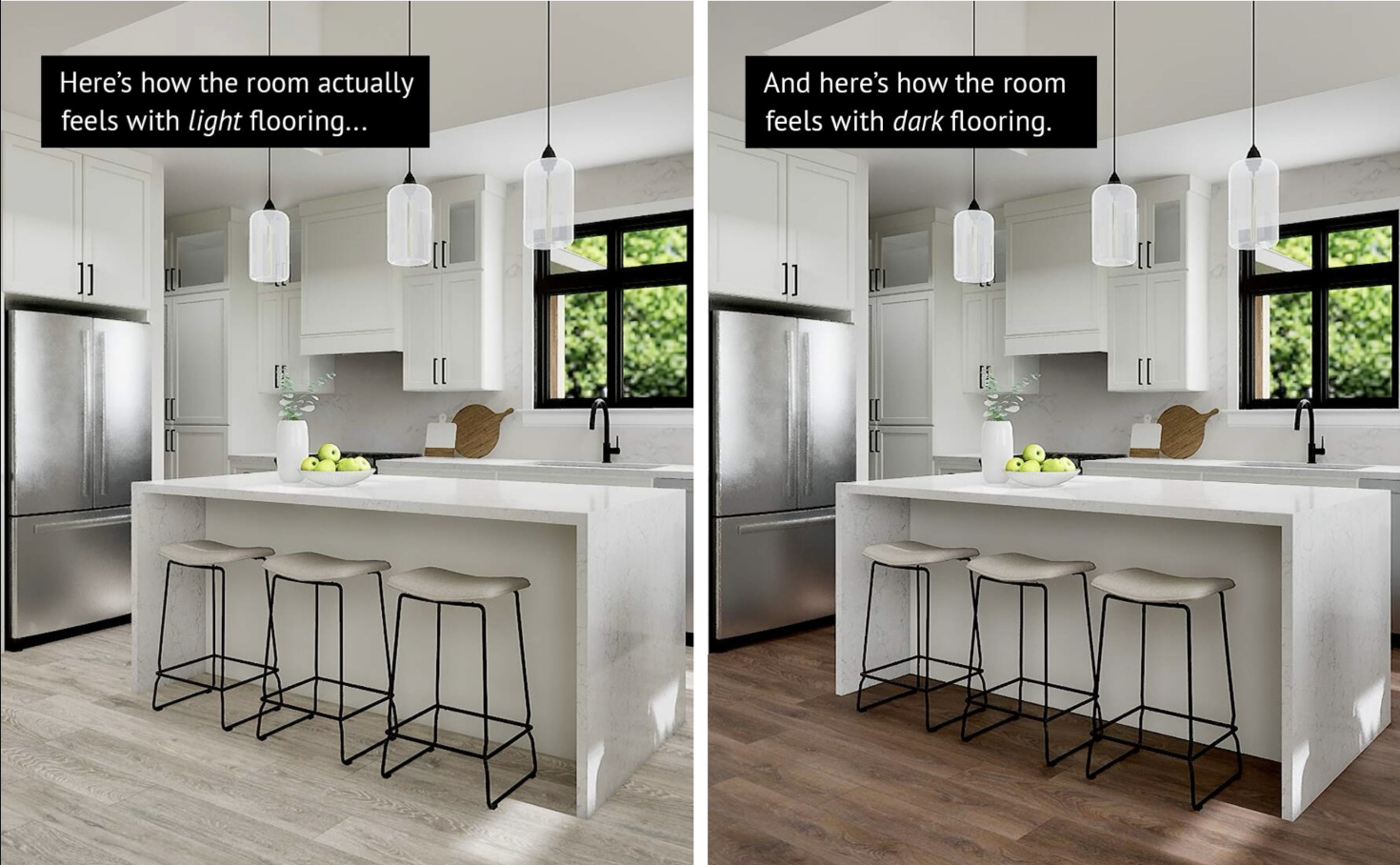VDC vs Traditional Design Centers: The Impact of Interactive Visualization on Home Buying
Homebuyers love the idea of designing their dream home, but the traditional design center experience can be overwhelming. A single appointment can stretch for hours as customers sift through swatches, flooring boards, and countertop samples, often under time pressure. Designers rarely have unlimited availability, leaving buyers rushed and uncertain.
There’s a better way. Virtual Design Centers (VDCs) combine interactive visualization, home configurators, and digital home buying tools to let customers explore and personalize their homes online before finalizing selections in person. Behind the scenes, innovations like advanced rendering engines and emerging AI-powered enhancements make these visualizations faster and smarter, but what matters most for buyers is that the results are accurate, interactive, and trustworthy.
The Pain of Traditional Design Centers
- Time pressure: Physical design center appointments can take hours, yet builders can’t realistically dedicate unlimited time to each buyer.
- Buyer hesitation: Without realistic previews, customers often leave second-guessing their choices.
- Capacity constraints: With only a handful of designers, appointments can stretch over months for larger projects.
- Limited visualization: Swatches and boards only hint at the final look, making it hard to imagine a full kitchen or bathroom.
The Virtual Design Center Advantage
Explore hundreds of models: Instead of walking through one or two show homes, buyers can digitally tour an entire catalog of floor plans.
Personalization at scale: VDCs allow buyers to experiment with finishes, furniture, and even structural changes like adding a garage or expanding a kitchen.
Accurate visualization: Every option is applied in real time to a 3D model, eliminating guesswork and building buyer confidence.
Convenience: Buyers can explore from home, at their own pace, and arrive at the design center prepared and focused.
Future-ready technology: With the rise of AI-enhanced visualization, VDCs are designed to evolve, combining human-curated accuracy with emerging tools that streamline the design process.
From Swatches to Immersive Visualization
The difference between a physical sample board and an interactive home configurator is dramatic. In a VDC, buyers can walk through a fully rendered 3D home, change finishes with a click, and see how materials look together under different lighting conditions. They can compare two design schemes side-by-side and instantly decide which one feels right, something swatches can’t deliver.
This combination of data-driven rendering and AI-assisted design tools ensures buyers get both the creativity of technology and the reliability of accurate visualization.

The Future of Home Buying is Interactive
Traditional design centers will always play a role, especially when buyers want to touch and feel materials. But their limitations, time, capacity, and reliance on imagination, make them incomplete. Virtual Design Centers complement the physical showroom by offering an immersive, accurate, and scalable solution that empowers buyers and streamlines the builder’s process.
As AI continues to shape industries, Virtual Design Centers stand out by blending innovation with precision. They leverage what’s useful from AI, while grounding every visualization in real design data that buyers can trust.
Interactive visualization isn’t just a convenience, it’s the future of digital home buying.
Ready to see the difference yourself?
Or, if you’d like a personalized walkthrough:


Follow Us On Social